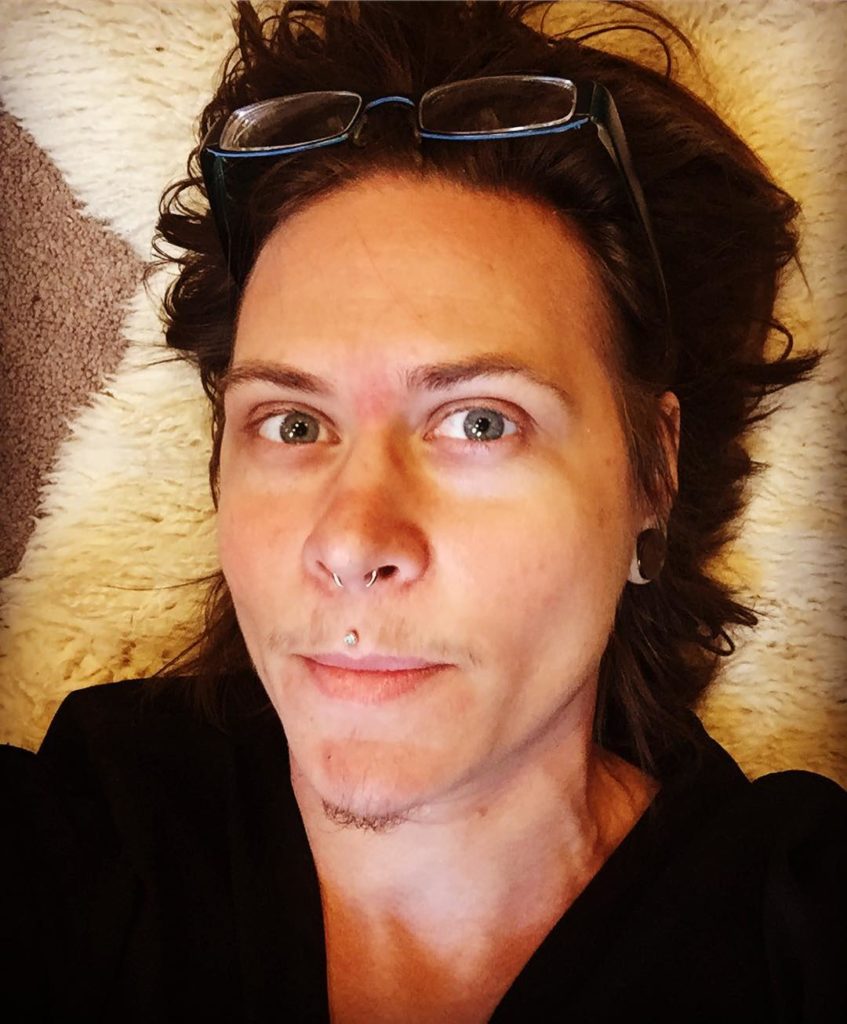 Your Brilliance is Never Sexed
Your Brilliance is Never Sexed
By Creature KPW
Maleness is meaningless without femaleness, and vice versa. They are both out of context without a deep understanding and recognition of the many shades of intersex which exist; dancing forms and variations binding two ends of all that is together. Whole. We are in lust, as a society, with extremes. But to be whole we must embrace and desire not only that which is sharply pointed and easily defined, but also all of the matter which fills our outlines. Colors and shapes, curves and knobs, bumps and erectile tissues forming uncomfortably, ridges and caverns aligning for an experience of pleasure (even when defined by social standards as shameful or pain). Experience your truth. All that we are, inside and out, is potential. This is everything. You, man with a hammer, are an emotional, sentient darling capable of all things named beautiful. You, daughter of the ocean with your tides and nurturing arms, are clear and strong, capable of overcoming nations with your acuity. You, child unnamed by parents and disowned by society are desperately needed—your innate knowledge of both and neither is a thirst upon the land. We are defined as individuals by who resides between our ears, defined by the movement of our limbs and the sounds uttered from the throat, defined by the variety of choices we make, defined again by research we take, tricks we learn, growth we handle, the silence we sit in that we may function another day in increased grace. Our hearts know these things when we allow ourselves to listen.
You are never a category—especially not one culled from a cursory glance between the thighs at birth.
What universes we are able to explore from that thigh-bordered region though, can deliver us whole, broken open and reassembled a million times (with others, or unto ourselves) to the galaxy, the stars, the everything we are made of and more. Insects and our other siblings stalking the planet will chew us back into dirt one day soon enough, taking what nourishment we provide as a last act: our offering to these tiny Gods. They grant us oneness with the dirt beneath the feet of all who walk—unity with the substance we so dearly love it is the name of our home: Earth. Created from clay, the promise is that in time we return to that state. The circus of our animation is but an echo in the universe. We are built from stories and your echo matters too…
Listen closely to your own life, and it will tell you where to go. Your dreams are what make you meaningful, large or as small as they may be. They inform you and are of your spirit. No form, no box, no ticked line can take your dreams away from you. Dreaming reminds us to truly connect to something, anything, that matters in these moments alive. You are significant. You will die. What matters is connection. Recognizing others as an integral part of your own wholeness.
Care for this house that we share so that as time marches on many more lives may also nest here, seeking a moment of safety in their bodies, dancing with the many articulated forms of life surrounding us in the vast jungle of love we call the Universe. Painful, terrifying, sobering, awful, blessed, grinding: life. You are something brilliant. This may mean little until you find your own capacity for love, a name reflected in the possibility of knowing the brilliance of offering: self.
Play On My Friends,
~ Creature
My writing takes time, research, and consideration: it is my art.
Please help me continue by joining my Patreon campaign, Donating, or booking a professional or educational Session with me. Thank you!

